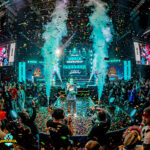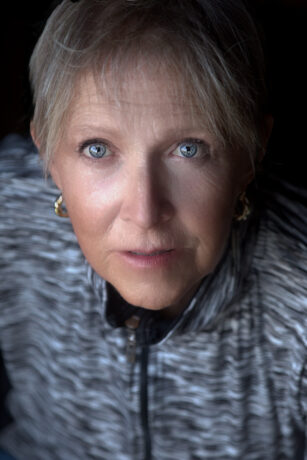
In the chronicles of our industry, when listing the most technologically advanced, visually audacious concert tours, U2’s Zoo TV is among the top. The 1992-93 video-heavy phenomenon was an ostentatiously staged multimedia experience intended to overload the senses. Whatever the band’s intention, its dazzling use of video left its mark, and that was emblematic of the work of Video Director Carol Dodds. As a video pioneer and innovator, she is equally technically proficient and artistically inclined. (She and Willie Williams would win an LDI Designer of the Year award for their work on this tour.) And this five-leg, 157-show world tour was just one of the many groundbreaking shows where Dodds was a trendsetter. There is also her work with David Bowie’s Sound+Vision tour, Madonna’s Drowned World tour, and Amnesty International’s Human Rights Now! tour. She was also one of the five directors of Woodstock 1999 worldwide live pay-per-view.
Others she’s worked with through the years include Cyndi Lauper, Roger Waters, Todd Rundgren, Marvin Gaye, Toto, Ricky Martin, Paula Abdul, Mariah Carey, the Eagles, KD Lang, and Michael McDonald. Perhaps her work seen most was with Bruce Springsteen and most recently, Jimmy Buffett.
A Stew of Creativity
Born in Philadelphia, Dodds’ dad was a mechanical/chemical/electrical engineer and her mother acted in television dramas filmed in New York City. She grew up in a household that thought big. When her mother later became a teacher, both parents got involved in NASA’s space program—Dad designed the elbow part of the space suit, and Mom applied to be the first teacher in space.
Carol studied acting and directing for the stage, completing a BFA from West Virginia University. There, along with others, she started an improv troupe traveling around the state. “Improv ended up really helping me with lighting and designing,” she says. “It teaches you to be open to opportunities, and you’re more apt to pick things up quickly and be nimble in being able to go in different directions on the fly.” She headed to New York to act but was determined to not be one of those out-of-work ones who waited tables, so she showed up at the production company, See Factor. Bob See hired her on the spot. In building their own lighting consoles, they needed her relatively small hands to get inside the board and do some soldering. Learning about building lighting boards led to her interest in switches, which progressed to working on lighting fixtures.
During this time, she designed the iconic “Flying A” ground-supported fulcrum truss system for Aerosmith. Meanwhile, the medium of video art was emerging, and the State University of New York at Buffalo was developing a program that appealed to Dodds. She would take time off to study there, almost going into video art (spoiler alert: She kind of did). “I would work for See Factor and then go play at the video studio that [pioneering video artists] Steina and Woody Vasulka were running.” There she got her hands on pre-video synthesizers and learned to play with individual video signals. “I like the visual capabilities of colors, and it went in line with video art. Using different colored lighting to augment music at a concert was like the video art of moving images.”
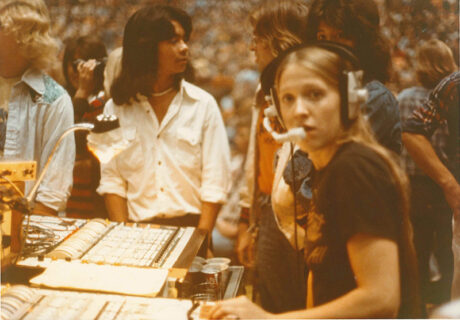
On the Road
See started sending her out on shows with some of the bigger acts of the day. And on those crews, she was always the only woman. “I was number five on his crew, with four guys ahead of me.” Her first tour was with Blue Öyster Cult. When asked if there were any concerns about her being a woman, she shrugs; showing up as a See Factor crew member was all the street cred one needed, and so no one doubted her ability to do the job. She’s not sure when she realized what she was doing was in fact a “career,” saying, “I was enjoying myself, making money—I didn’t know how long it was going to last.”
One thing was she was not getting: overseas gigs. She went to England on her own meeting up with the Rolling Stones’ production company. There she tried to convince them to incorporate video art as part of their next tour, which they declined. “I came back when asked to design Bob Dylan’s Rolling Thunder Revue. On that tour I got my first taste of seeing television production.” She got opportunities to continue experimenting with video art, and in 1981 worked as a lighting designer with music video pioneer Todd Rundgren on his groundbreaking video for his hit “Time Heals,” which blended cutting-edge computer technology with live action. That year that video was the eighth one played on a new cable channel called MTV.
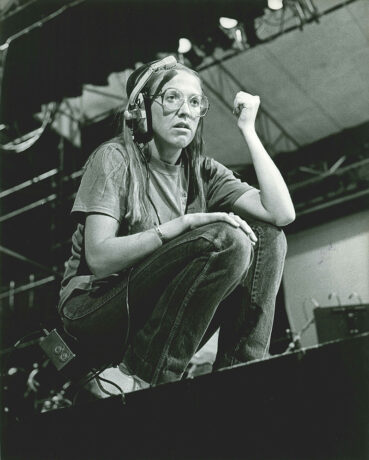
In 1982, she got called in to work on the US Festival. There she worked with key players in the concert touring industry who would play a major part in her rising career: George Travis, Rick O’Brien, and Tim Mahoney; especially Travis, who was Springsteen’s Tour Manager.
At this point, she worked her way up being a full-fledged Lighting Designer/Director, having taken on that role for Blue Öyster Cult. She next worked in that capacity for the Talking Heads. Working with David Byrne was an early test of her ability to improvise and “adapt, as he previously had shunned lights completely and he liked to rely on house lights.” Byrne initially said he didn’t want colored lights, along with other typical visual elements of the day, and those restrictions forced her to be creative with color temperatures of the lights and what she did with the simple halogen lights above the band and the beam varieties and angles. She did get him to agree to a cyc light in red and some tiny floor lights on each band member.

On Bruce Springsteen & The E Street Band’s 1988 Tunnel of Love Express tour, Dodds was working with Lighting Designer Jeff Ravitz. Then the video director left midway through the tour, and Tour Manager George Travis asked her if she wanted to move over to video. “You mean I could get paid for doing video?” she thought. Intrigued, and possessing the imagination of what was possible, she took that gig, likely being the first woman in concert touring to hold that position. “Bruce and George’s perspective was very much I-Mag—they just wanted more audience members to see him better. But I saw it as a fantastic opportunity to expand artistically and not broach beyond the bounds of what they wanted. That’s the interesting part of working with different artists—you have ideas, they have ideas, and you work together to find out what is going to work.”
“She helped me get the Tunnel of Love tour organized, since it was an exceptionally complicated design in the new world of automated lighting,” Ravitz says. “But when she was asked to direct our video on-tour, she took to it like a natural and was one of the important groundbreakers in the specialized world of I-Mag. Carol has a superb eye for composition, an LD’s instinct for pace and timing, and the spirit and soul that makes for compelling shots.”
Another breakthrough happened for her on this tour: In Europe, the song “Spare Parts” was starting to chart, and a music video was needed; they turned to Dodds to direct it. Springsteen and Travis would take her along on the historic 1988 Amnesty International Human Rights Now! tour that also featured Sting, Peter Gabriel, Tracy Chapman, and Youssou N’Dour. It was a colossal production, with band and crew flying together on a jumbo jet. “It was hilarious—a goofy, creative group,” she says. “We went to cities and venues we’d never usually play because they wanted to spread their ideas rather than make money.” It was on this tour she was able to explore television work further, where she got to direct Peter Gabriel and Tracy Chapman. That led to her being hired by Bowie, where she broke further ground.
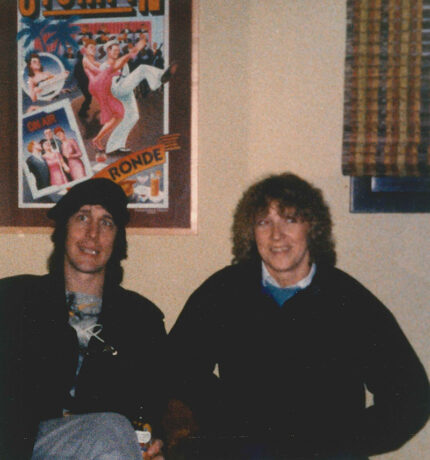
Zoo in Space
Being invited to be part of Bowie’s 1990’s Sound+Vision tour was another major advancement in her career. On that tour, she visited 27 countries putting on 108 performances that required eight trucks and 80 traveling crew members. “I think David was one of the first people that really incorporated more of an artistic bent over what was then the standard use of video,” she says. “We were mixing video and film on multiple gauze scrims outdoors.” Layers of film, rear projection, and black and white images added up to a visually compelling show that was ahead of its time. It featured a 60’x40’ transparent gauze scrim that was “incredibly expensive,” and images were projected from some of the first 20K video projectors of the day.
Now established as an innovator and visionary, Dodds next went to work on Paula Abdul’s Under My Spell tour in 1991—Abdul’s first as a headliner. This tour had Electrosonic video cubes, which were about 4’ deep and took up 2.25’ x 3’ of screen area. “It was the first use of video wall on a tour as far as I know,” Dodds says. “We used a Sony RM-250 switcher for a color block video wall pattern and shot both video and film for the playback material. It took us forever to program it all!” It was a nerve-wracking experience getting the switcher to boot up, all the while she and the video team were having to work under the stage wearing hard hats.

Next came U2’s 1992-93 Zoo TV Tour. How extreme was that? “We were carrying around a satellite dish so we could uplink to space and talk to astronauts live during the show,” she says. She worked every single day all year long. LED technology was at a crucial point—in addition to being in video panels, it was increasingly becoming a light source too. It wasn’t uncommon for conflicts between video directors and lighting designers to erupt during this technologically disruptive time. She admits it was a challenge, but because she started out and still did lighting design work, she was sensitive to both the technical aspect and the creative. “One of the things I was taught was that if the audience is watching the lighting, it detracts from the show. We’re here to support the artist, and with that in mind, I enjoyed working with lighting designers, working together to enhance each other’s work.”
It was also the highest-grossing tour of the year, and a paradigm-shifting success that would influence and inspire many other acts that followed. Both she and designer Willie Williams won awards for their work. Dodds next went on to work for the Eagles for 13 years, an experience she enjoyed despite the band’s reputation for being difficult. “Glenn [Frey] and Don [Henley] were both direct with everyone and were just trying to provide the best possible show,” she says. “They were technically astute and wanted to make sure the audio and visual blended.”
While in Australia in 2005, she directed their DVD, Eagles: Farewell 1 Tour: Live from Melbourne. Stan Kellam, one of the editors, was also Jimmy Buffett’s longtime video producer. When a director position opened on Buffett’s crew in 2010, he and Tour Manager Charlie Fernandez called Dodds to join the team and was with him until Buffett’s recent passing.

The Most Fun
Through it all, she took any opportunities to do DVD/television/live-to-tape projects, which included work for Madonna, Mariah Carey, Bette Midler, Ricky Martin, Backstreet Boys, Woodstock 1999, and many others. Stepping out of the concert work, she worked important events like Philadelphia’s Thanksgiving Day Parade, Formula 1 in Singapore, and the Arista pre-Grammy telecast. She would get calls to do television for the groups asking her to direct in some capacity and got increasingly involved with live-to-tape television shows. She is still at it, and still enjoys the work. “The show is always my favorite part,” she says. “It doesn’t matter who I’m working for or what I’m doing. The nice thing about doing live shows is the time comes when you can’t build or work on it anymore. You have to stop and work with what you’ve got and go; that’s always the most fun.”
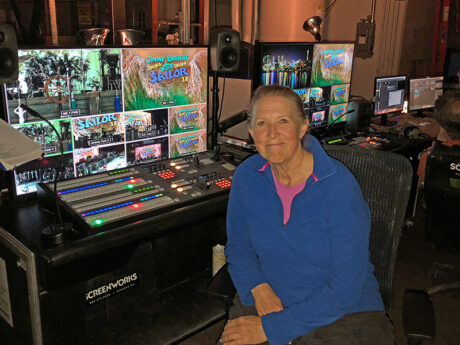
In addition to her talent, she has earned a reputation as being someone you want in your foxhole. Ravitz says that he’s “known Carol since the 80s, when she already had made a name for herself as a lighting designer. Over the years and the many landmark shows for which she has created exciting video, she’s proven herself over and over to be a true master, and a wonderful person, to boot.”
Dodd notes that, “I just really enjoy how people all look at things differently. From when I was doing video art back in the 1970s to what we’re seeing today at EDM concerts and raves, I see a through point.” As to advice for those seeking to get into this part of the live event business, yes, there are classes and schools, but “that doesn’t make you a master. I still think starting at the bottom and getting that experience makes you better. It’s all about relationships and finding solutions. The more you contribute, the farther you’ll go. That’s important. And know history but don’t be limited by it. As things change quickly, try to stay ahead of the game,” she says, adding, “And just live a great life.”
